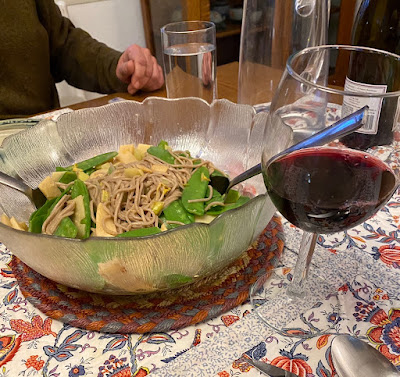Coffee was already very popular in America at the time of the Boston Tea Party, and consumption by Americans was rising throughout the 19th century. Demand was also rising in Europe, and thus coffee plantations were a growing endeavor. Coffeeland: One Man’s Dark Empire and the Making of our Favorite Drug by Augustine Sedgewick (published 2020) documents the spread of coffee drinking and the many issues that arose in its cultivation and distribution, beginning in the 15th century and continuing to the early twenty-first century. I found the book to be surprising in how many different topics it covered, while still concentrating on the history of coffee.
Sedgewick focuses on one family, the Hill family, founded by James Hill in the late 19th century. Hill established and developed vast plantations in El Salvador, located on the slopes of the Santa Ana volcano where coffee-growing conditions were very favorable. With a recurring focus on Hill and later on his sons, the author explains the entire history of coffee and its economic role — to do so much through focus on a man the author has to pick the right man! That would be James Hill.
The complex history of coffee involves learning how a variety of enterprises developed to plant, grow, harvest, and select ripe coffee beans, and to process, transport, package, promote, and sell this commodity, including details about developing ways to judge the quality and taste of coffee beans, the invention of the vacuum-packed can, of instant coffee and iced coffee, and of ways to keep coffee fresh.
In the course of the book we learn how scientific advances in nutrition, chemistry, physics, and economics all contributed to the understanding of coffee. Coffee is presented as a trade product, an agricultural commodity, and a beverage with stimulant properties: the chemical identification and isolation of caffein, for example, was a big project.
The politics of coffee and efforts to control supply and price of the beans is a major theme of the book as well. The government of El Salvador was very involved with the coffee trade, as were governments of other producing countries (especially Brazil) and of consuming countries (especially the United States). The parallel thread of consumption in the United States also runs through the book, including the history of Hills Brothers Coffee Roasters in San Francisco, which eventually purchased most of the coffee from James Hill (no relation, slightly different name), and through the history of American institutions like the supermarket, and American political and commercial relations with Central America.
The most interesting element of the book is the focus on the workers of Hill's plantation and of workers on coffee plantations (and other agriculture) throughout the world. Hill effectively regarded workers as a source of labor but not in a real sense as fellow human beings. This was easier for him and for many other owners because he was from England, not a member of any local group, indigenous or Hispanic. Where he could, he also hired managers from groups outside the workers' communities. Managers not only organized the work, they also policed the laborers to prevent theft or misrepresentation of how much they worked. There was little or no trust between Hill and his employees -- yet on the whole he treated them better than some of his competitors, for example, providing the full measure of food owed to them.
As Hill and many other plantation owners consolidated their holdings, they had displaced workers who had farmed the land both for subsistence and for cash crops like coffee. These planters grew coffee where there had been crops like avocados, mangoes, oranges, yucca, maize, and beans, also replacing most native forests. As a result, the former inhabitants faced very grim times without food or work, and Hill and his peers wanted to exploit their desperation to make them work for as little pay as they could get by with.
James Hill worked out many ways to force more labor from the workers, and to restrict their freedom and their access to food and shelter. Before Hill took over, coffee orchards harbored many other food-bearing plants such as avocado trees and bushes with small tropical fruits native to the area; the workers could gather the fruit and eat while they were harvesting coffee beans or tending the coffee trees. A coffee orchard needs other plants to shade the coffee bushes and to return nitrogen to the soil, but Hill replaced fruit trees and bean plants and the like with poisonous species. Thus the workers became even more dependent on the food -- corn tortillas and beans made with cheap commodities -- provided as part of their very low wages. In some cases, when the adult workers requested higher pay, Hill replaced adult labor with child labor. And on and on. The callous cruelty to the natives is hard to read about.
All these changes occurred between the end of the 19th century and the 1920s. When the global economic depression began, demand for coffee plummeted, as did the price. Social conditions and wages for the workers became drastically worse, and the rise of political alternatives, especially Communism, began to spread among the people. Coffeeland includes a detailed history of the struggle between the government and the Marxists:
"The core argument of the popular communism that arose in El Salvador in opposition to the hunger-based system of plantation coffee production was that, if to be human was to be hungry, the goal of government should be provision not privation, satiety not starvation." (p. 253).
Needless to say, the government and the planters fought against reforms or outright revolution, and not surprisingly, the US, with its own economic interests at stake, also involved itself in government affairs and economic issues, resulting in strikes and violence. An actual uprising and attempted revolution took place in El Salvador in January, 1932. With support from US, Canadian, and British warships (who arrived claiming to protect the interests of their citizens in El Salvador), the government put down the rebels and killed a large number of communists and their supporters, including the leader Farabundo Martí and a follower named Mario Zapata. These became the most famous martyrs of this revolution, as a government slaughter of their supporters -- a thinly disguised genocide of native Indians -- continued. Coffeeland tells the story through many eyewitness accounts, and is very interesting.
World War II brought an end to the Depression, and brought new demands on Central America from the United States. Coffee imports grew, as coffee became an important staple for citizens and soldiers: the soldiers drank coffee at double the civilian rate. After the war coffee exports to the US and Europe were increasing, and prices increased to four times the prewar rate. The coffee growers' association of El Salvador honored James Hill, who died in California in 1951 at age 80.
Coffee's importance in modern life continued to rise. A coffee break became the name for a practice that became widespread in the early 1950s, reflecting a "new consensus that time off for coffee was a natural part of a good day’s work." (p. 334). Further, labor laws and court decisions established that coffee breaks were part of the workday, and that the effect of coffee benefited both the employer and the workers, so they were to be paid for the time.
Politics in El Salvador continued around the issues that had been important in the 1930s: how agricultural workers were treated, and how the country could industrialize and become more modern (to put it ultra-simply). While a military government and fourteen ultra-rich families ruled the country, by the late 1970s an underground version of the communists of the 1930s was again active. Jaime Hill, grandson of James Hill, was kidnapped by the communists in 1979. Specifically, by "the People’s Revolutionary Army of El Salvador, one of five leftist groups fighting the Fourteen Families and the military dictatorship." (p. 342). Kidnapping was the way the underground revolutionaries funded their activities at the time. The politics is very complicated, but Coffeeland explains it.
Jaime Hill was held by his kidnappers for some months, while they negotiated for ransom with his family, with the officials of El Salvador, and with the archbishop, who was a political figure. As part of their response, the Hill family was required to take out ads in major American newspapers, presenting the views of the kidnappers. After four months of captivity, the ransom was paid, conditions were met, and Hill was set free. The revolutionaries fought for their cause for years afterward -- a very long story. "The Salvadoran civil war was the largest American counterinsurgency and nation-building campaign between the fall of Saigon and the fall of Baghdad. ... Over twelve years, the countryside was again transformed into a mass grave for as many as 75,000 people." (p. 348).
In 1991, with the cooperation of the US, a peace agreement was worked out between the rebels and the government. "After the peace agreement, the Farabundo Martí National Liberation Front moved to secure a permanent peacetime role in Salvadoran politics and society. Some FMLN leaders took courses through Harvard University, 'a sort of Politics 101,' to learn how to set up a political party. Others wanted to go into business, in part to provide employment for their former soldiers. For help, they called Jaime Hill." And Hill did help his former kidnappers. (p. 349).
 |
Coffee being delivered at a cooperative
fair-trade coffee processor in Costa Rica
that we visited in 2019. |
By the first decade of the twenty-first century, coffee has become another type of American obsession, with a focus on specialty coffees and regional roasts. The heirs of James Hill have responded by growing high-end coffee for this market. The fair trade movement includes pressure on consumers to be mindful of the workers in the coffee industry, especially as coffee workers worldwide suffer from extreme poverty and seasonal food insufficiency.
Coffeeland ends with the post-kidnapping life of Jaime Hill, whose experiences caused him to rethink his life and to become a worker in poor neighborhoods, trying to help people overcome addictions, poor health, and poverty, and finding peace for himself.
Coffeeland is a complex and challenging book, but I found it worth reading for its wide-ranging insights and fascinating historic information.
Review © 2022 mae sander.


















































